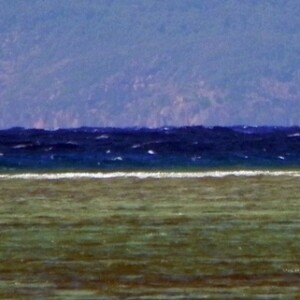Tuesday, 23rd of August 2011
Kattanga Wetlands | Trinity Beach—Cairns | Smithfield ...weiterlesen "Cairns"
Schlagwort: strong wind
Journey to the Exotic Cairns and Green Island
Sunday 21st of August 2011
Cairns—Green Island ...weiterlesen "Journey to the Exotic Cairns and Green Island"
Category description
A tropical cyclone is a storm system characterized by a large low-pressure centre and numerous thunderstorms that produce strong winds and heavy rain. Tropical cyclones strengthen when water evaporated from the ocean is released as the saturated air rises, resulting in condensation of water vapour contained in the moist air. They are fuelled by a different heat mechanism than other cyclonic wind-storms such as nor’easters, European wind-storms, and polar lows. The characteristic that separates tropical cyclones from other cyclonic systems is that at any height in the atmosphere, the centre of a tropical cyclone will be warmer than its surroundings; a phenomenon called „warm core“ storm systems.
The term „tropical“ refers both to the geographical origin of these systems, which usually form in tropical regions of the globe, and to their formation in maritime tropical air masses. The term „cyclone“ refers to such storms‘ cyclonic nature, with counter clockwise wind flow in the Northern Hemisphere and clockwise wind flow in the Southern Hemisphere. The opposite direction of the wind flow is a result of the Coriolis force. Depending on its location and strength, a tropical cyclone is referred to by names such as hurricane (/ˈhʌrɨkeɪn/, /ˈhʌrɨkən/), typhoon, tropical storm, cyclonic storm, tropical depression, and simply cyclone.
While tropical cyclones can produce extremely powerful winds and torrential rain, they are also able to produce high waves and damaging storm surge as well as spawning tornadoes. They develop over large bodies of warm water, and lose their strength if they move over land due to increased surface friction and loss of the warm ocean as an energy source. This is why coastal regions can receive significant damage from a tropical cyclone, while inland regions are relatively safe from receiving strong winds. Heavy rains, however, can produce significant flooding inland, and storm surges can produce extensive coastal flooding up to 40 kilometres (25 mi) from the coastline. Although their effects on human populations can be devastating, tropical cyclones can relieve drought conditions. They also carry heat energy away from the tropics and transport it toward temperate latitudes, which makes them an important part of the global atmospheric circulation mechanism. As a result, tropical cyclones help to maintain equilibrium in the Earth’s troposphere, and to maintain a relatively stable and warm temperature worldwide.
Many tropical cyclones develop when the atmospheric conditions around a weak disturbance in the atmosphere are favourable. The background environment is modulated by climatological cycles and patterns such as the Madden-Julian oscillation, El Niño-Southern Oscillation, and the Atlantic multi-modal oscillation. Others form when other types of cyclones acquire tropical characteristics. Tropical systems are then moved by steering winds in the troposphere; if the conditions remain favourable, the tropical disturbance intensifies, and can even develop an eye. On the other end of the spectrum, if the conditions around the system deteriorate or the tropical cyclone makes landfall, the system weakens and eventually dissipates. It is not possible to artificially induce the dissipation of these systems with current technology.



